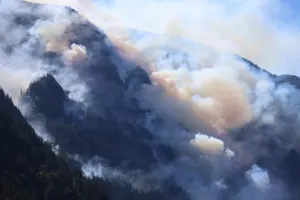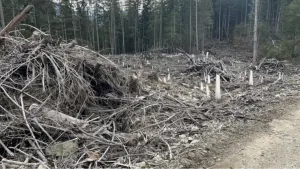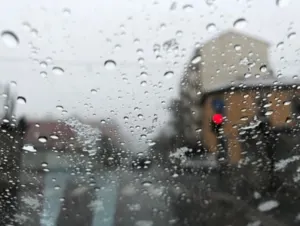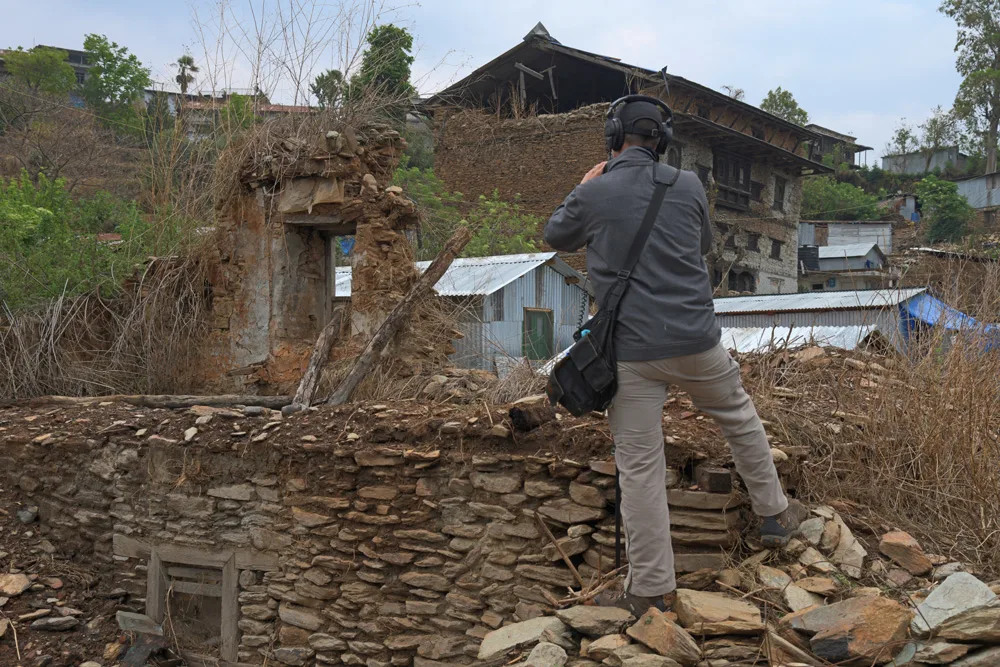
Scars and devastation remain years after Nepal's historic earthquake
In 2015, a severe earthquake struck near the city of Kathmandu in central Nepal on April 25, 2015. Also called the Gorkha earthquake, it killed some 9,000 people. Many thousands more were injured, and more than 600,000 structures in Kathmandu and nearby towns were either damaged or destroyed. And years later, the devastation remains.
I’d placed my foot with gentle care on what looked to be some sort of cement block that had been partially turned to gravel and powder. I wasn’t sure if it would hold my weight, but I wanted to get a better view under the collapsed ceiling of what had once been a monastery at the top of a ridge in rural Nepal. Our Nepalese guide, Sukman, had warned me to be careful, but he thought that since the structure had been in its state of partial destruction for about five years, it wasn’t likely to further collapse.
The magnitude 7.8 earthquake that had brought down the building along with tens of thousands of others across Nepal in 2015 changed the lives, and the politics, of the mountain nation. Occurring on April 25th at 11:56 am, it was the deadliest natural disaster to strike the nation in 81 years.
My Storm-Hunters cohost, Jaclyn Whittal, and I arrived two years later, and we expected to find, at most, some remnants of what had happened and perhaps some places still rebuilding. What we found instead was a nation still reeling from the disaster, with ongoing rebuilding seemingly just beginning.
Even as I stepped down on the brick, the feeling as if the disaster had just occurred seared through my mind as I noticed a calendar, still intact and readable, with the month of April 2015 on its face. It struck me that we, as Canadian visitors, were just witnesses to a disaster well beyond anything we’d ever see, or ever be a part of in faraway, safe Canada.
And yet, what also struck me was the determination and energy that the Nepalese were turning towards rebuilding their nation. It wasn’t just recreating what once was, it was ensuring that what would be rebuilt, would be made safer so that such as disaster would never happen again, no matter how hard the ground shook.
Scroll below for a glimpse of the devastation we witnessed.

The huge Hindu temple complex, Pashupatinath, in Kathmandu was hit hard by the earthquake in 2015. Even in 2017 (seen in the photo above), parts of the temple are still off-limits to visitors due to the instability of the buildings.
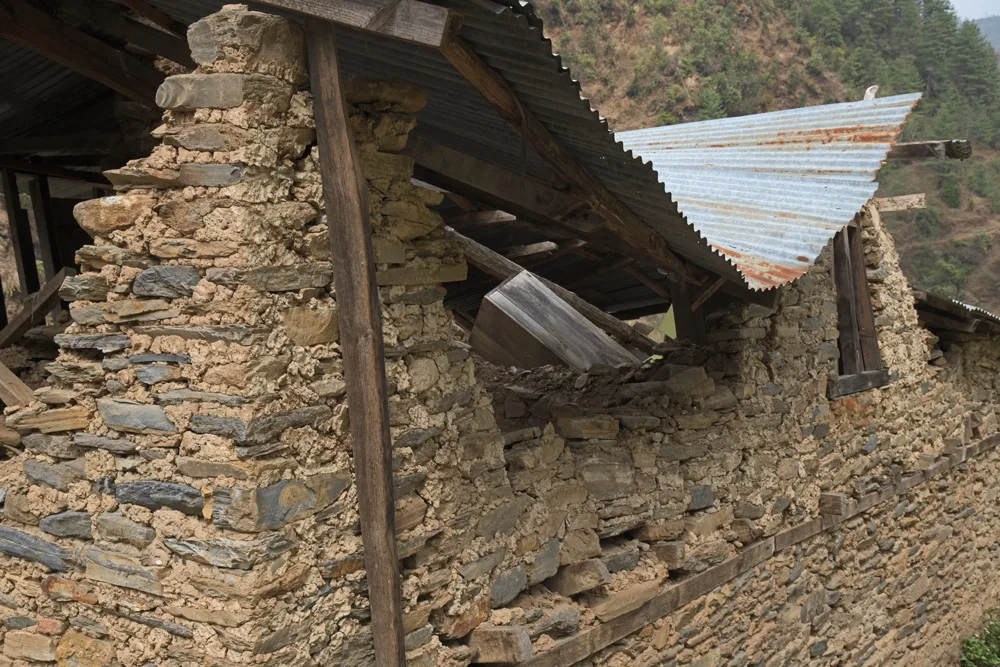
The village of Thulopatal, home of our Exodus Travels guide, Sukman Tamang suffered severe impacts from the 2015 earthquake. The health centre came close to total collapse and has since been abandoned and new one built in a safer location.
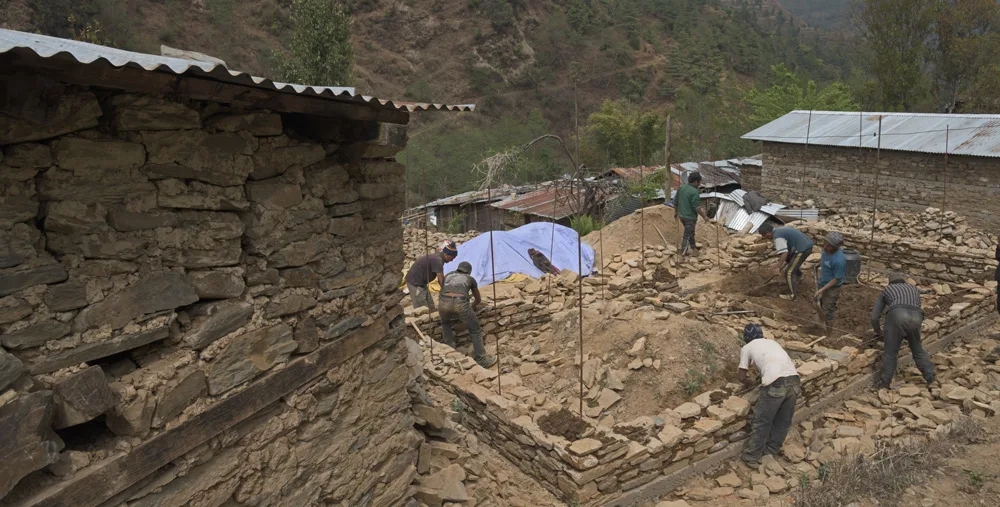
Rebuilding in Thulopatal, home of our Exodus Travels Guide, Sukman Tamang, continues in the shadows of one of the near destroyed old health centre. The long steel bars in the new construction serve to anchor the new construction and make the building earthquake resistant.
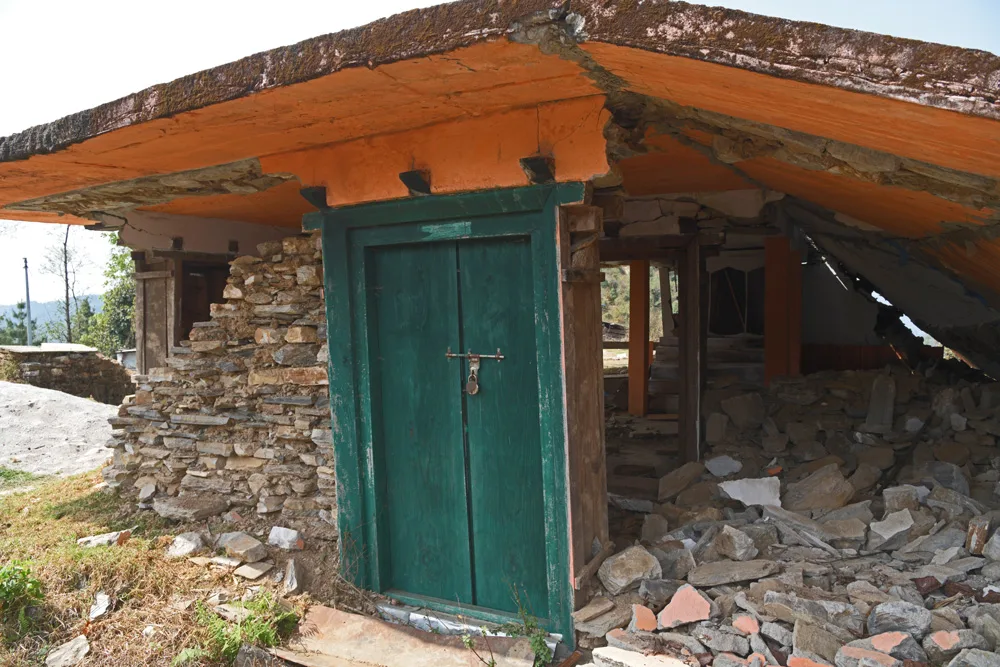
Only the door remains intact in this wrecked monastery near Thulopatal. Despite the seeming strength of a door frame, doorways are NOT recommended safe spots in an earthquake. The best place to be is under a table or in a spot that will keep you safe from flying debris.
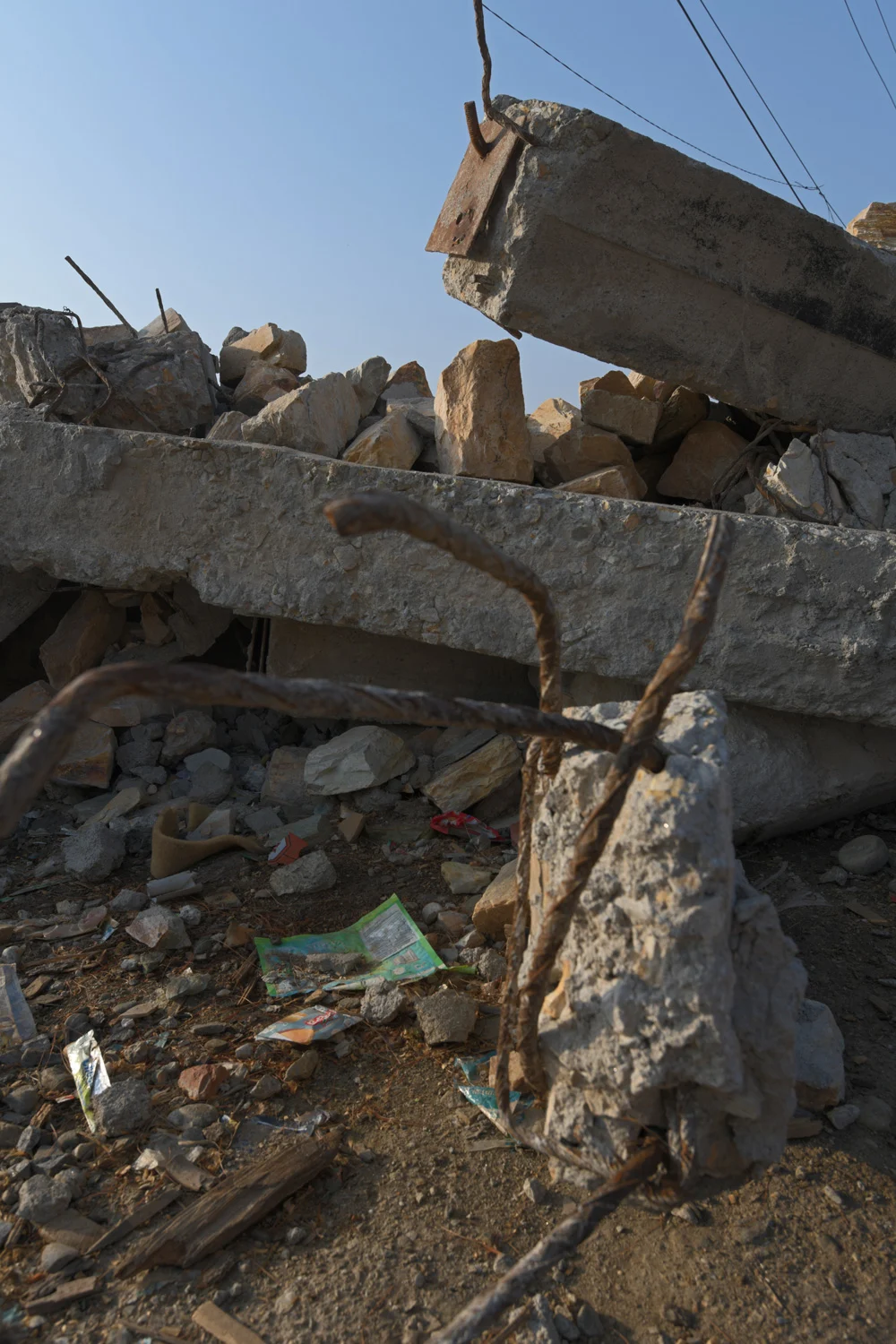
The twisted debris left after the 2015 earthquake belies the sheer power of the shaking that left Nepal in ruins. While many buildings are being rebuilt, some, like this one, were torn down and left on the ground.

The 2015 earthquake changed how construction is being done in Nepal. All new buildings must now be earthquake resistant. Part of that mandate is the requirement of steel rebar reinforcement within the walls of the buildings. Everywhere we went in Nepal, one of the most common sights we observed were the wire-like growths sprouting from half-constructed buildings.
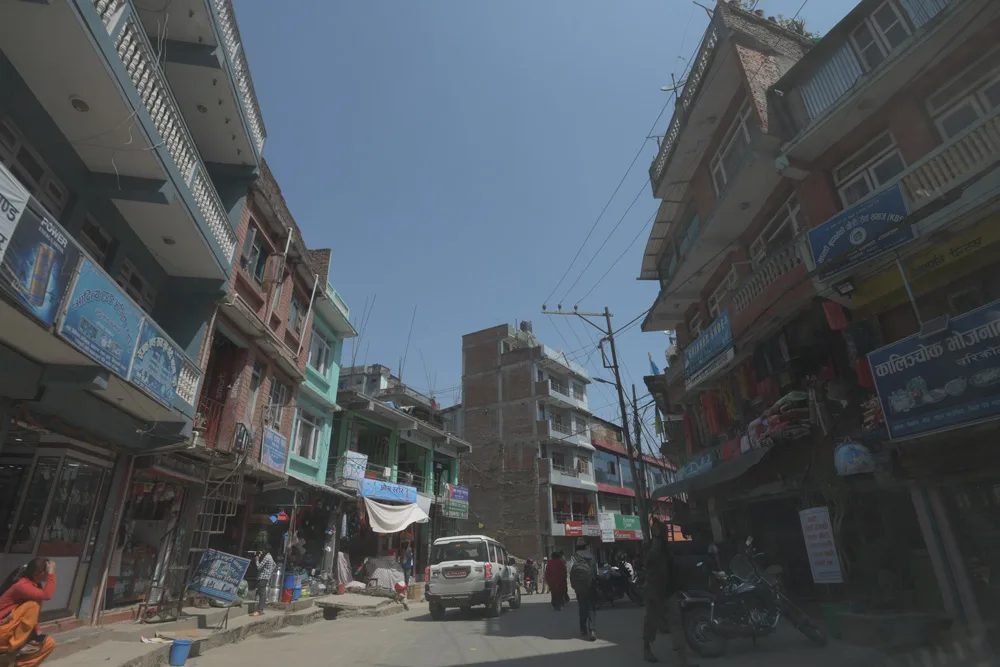
The rural areas of Nepal suffered tremendous damage during the earthquake thanks to inadequate building construction. These more modern buildings withstood the shaking better than stone and cement homes and businesses in small villages, but imagine standing on this street as the buildings swayed and vibrated above you.
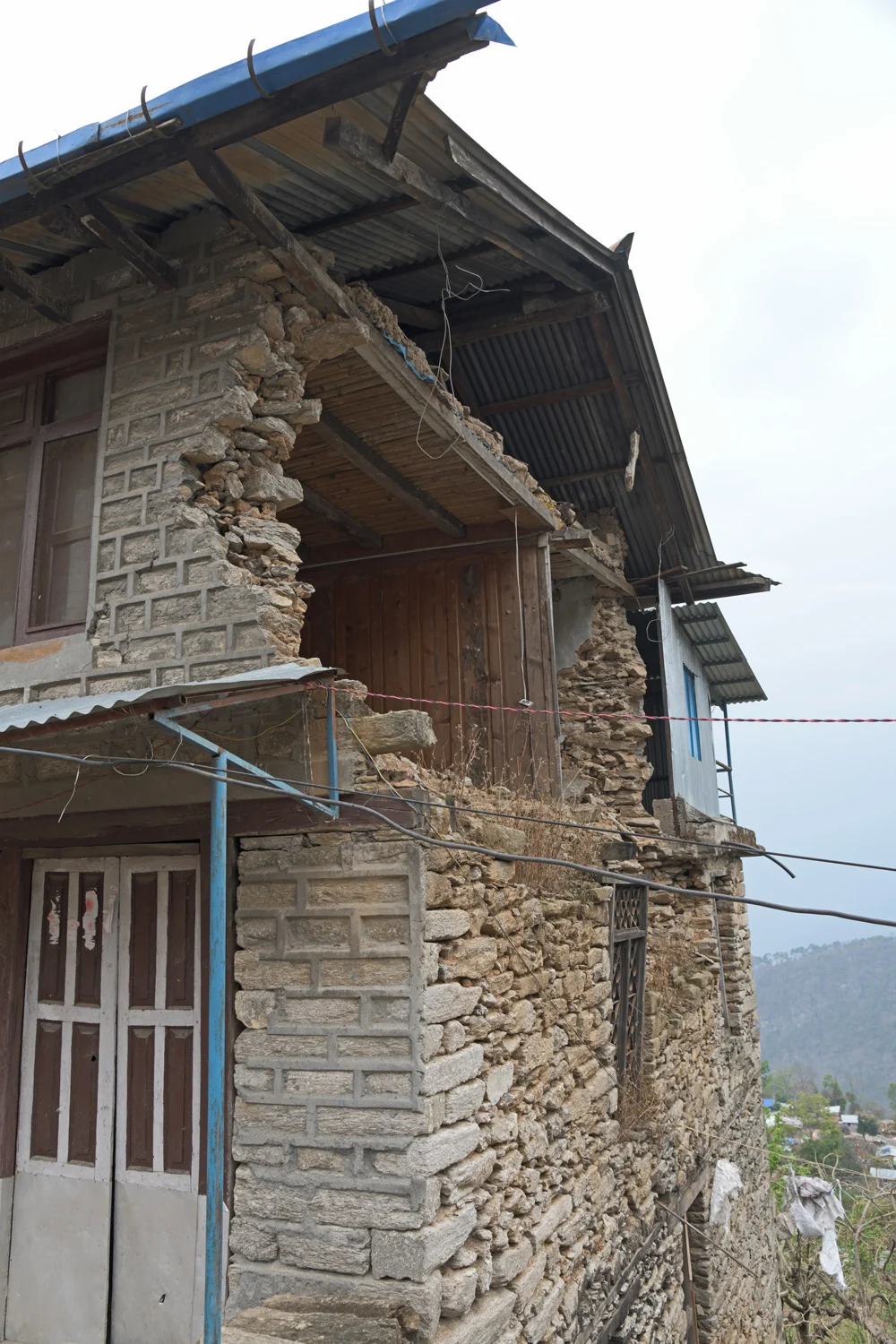
Large buildings without the reinforcement crumbled like sandcastles hit by an incoming tide. Even two years later, the scars of that day in April are evident everywhere we went.
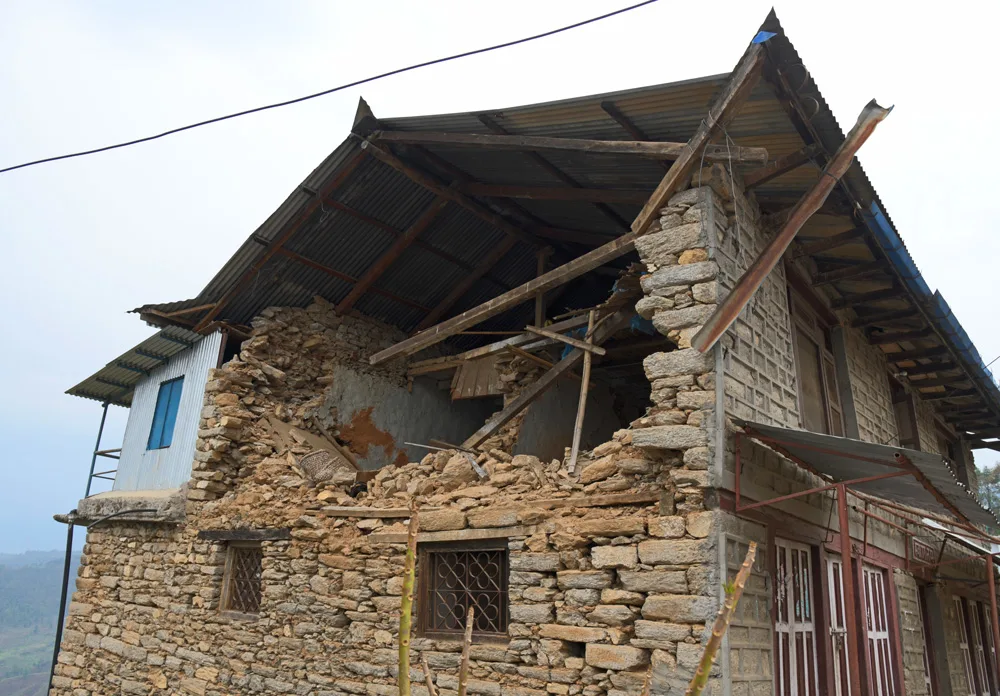
Many of the buildings damaged by the 2015 earthquake have been abandoned both because the structure is too dangerous to stay in and too expensive to repair.
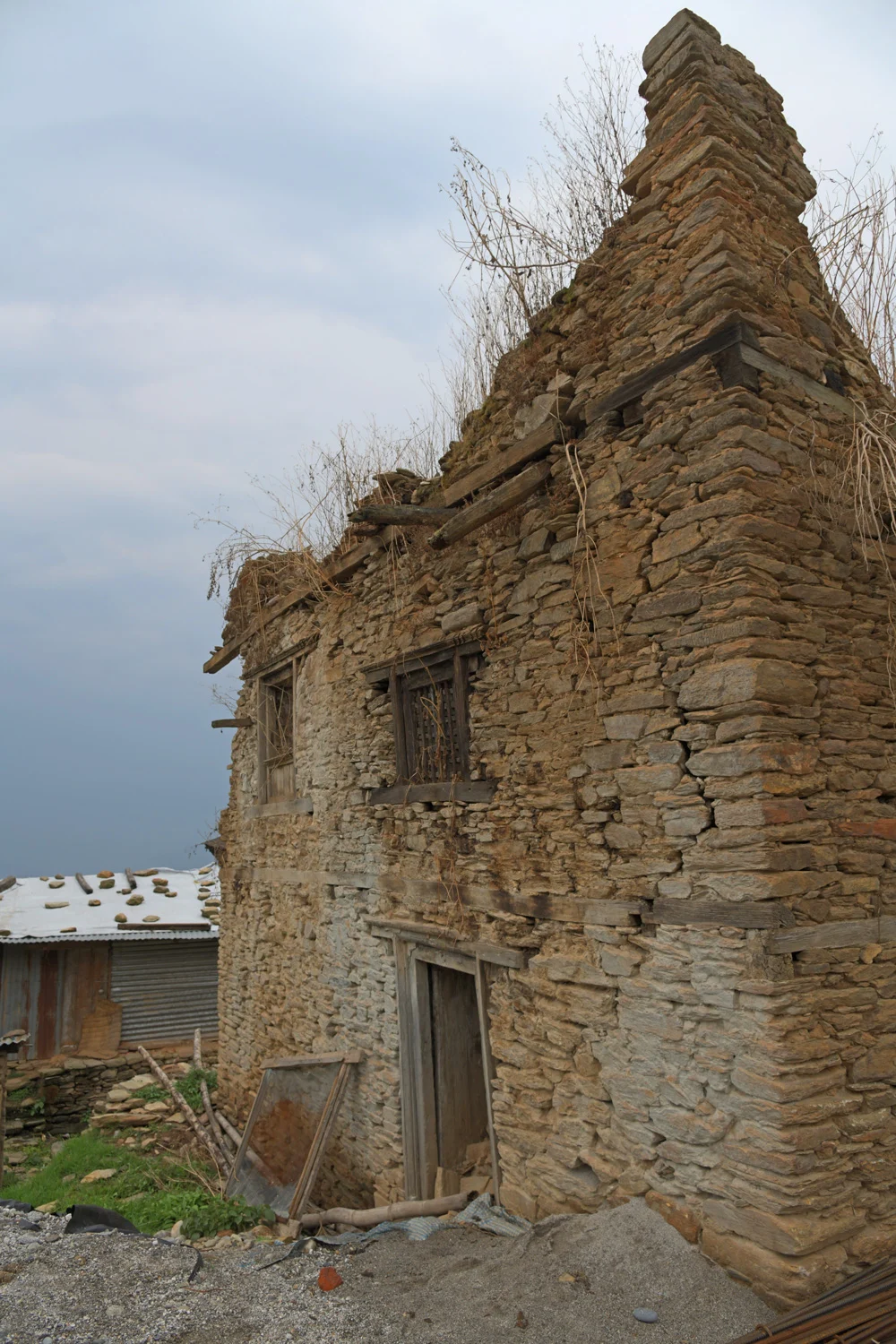
Nature reclaims abandoned structures rapidly in Nepal. The home seen above was left in 2015 after the earthauke but looks like it’s been there for decades. This part of the town was comprised almost entirely of old buildings and took the brunt of the damage.

Our cameraman, Yan Theoret, stands amid the ruins of a whole neighbourhood so he can document the remains of a house. We could walk above the street, along what had once been the thick outer walls of homes. It was sobering to think that these had once housed full families and were now just crumbled rock and gravel.

This building was once a family home and now only has goats and chickens living here. Despite looking fully intact, an engineering inspection found it too unstable for humans to inhabit. We asked if the building was ever going to be repaired and no-one knew. This uncertainty is part of the slow moving disaster that in the aftermath of the 2015 earthquake.
Tune in to full episodes of STORM-HUNTERS on The Weather Network, Sunday at 7pm and 10pm ET & PT.







